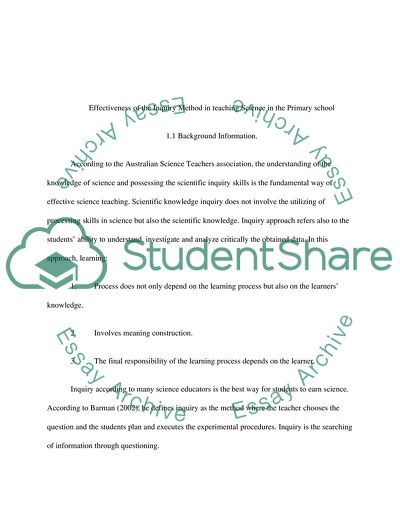Cite this document
(Effectiveness of the Inquiry Method in Teaching Science in the Primary Research Paper, n.d.)
Effectiveness of the Inquiry Method in Teaching Science in the Primary Research Paper. Retrieved from https://studentshare.org/education/1770569-effectiveness-of-the-inquiry-method-in-teaching-science-in-the-primary-school
Effectiveness of the Inquiry Method in Teaching Science in the Primary Research Paper. Retrieved from https://studentshare.org/education/1770569-effectiveness-of-the-inquiry-method-in-teaching-science-in-the-primary-school
(Effectiveness of the Inquiry Method in Teaching Science in the Primary Research Paper)
Effectiveness of the Inquiry Method in Teaching Science in the Primary Research Paper. https://studentshare.org/education/1770569-effectiveness-of-the-inquiry-method-in-teaching-science-in-the-primary-school.
Effectiveness of the Inquiry Method in Teaching Science in the Primary Research Paper. https://studentshare.org/education/1770569-effectiveness-of-the-inquiry-method-in-teaching-science-in-the-primary-school.
“Effectiveness of the Inquiry Method in Teaching Science in the Primary Research Paper”, n.d. https://studentshare.org/education/1770569-effectiveness-of-the-inquiry-method-in-teaching-science-in-the-primary-school.


